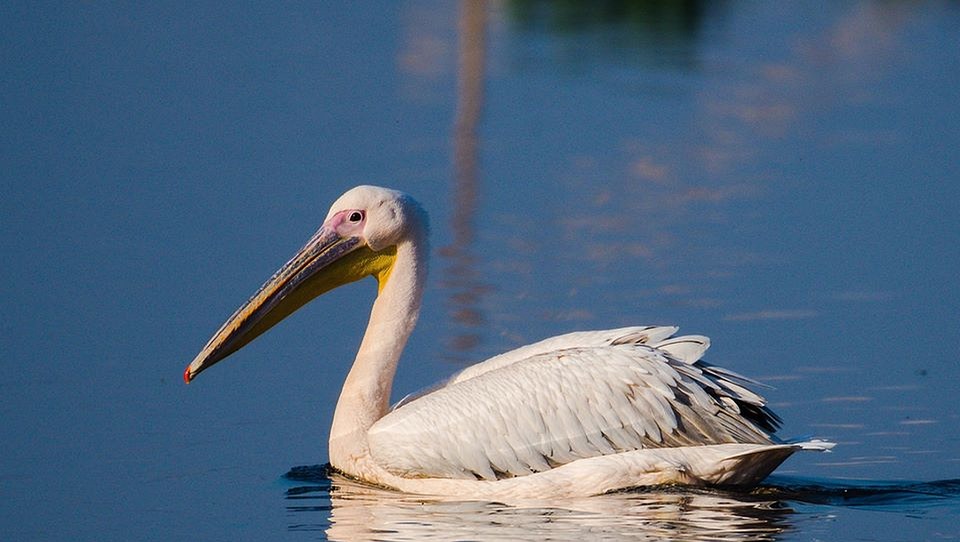**Understanding Fish Behavior: How Feeding Cues Influence Their Responses**
Introduction
Fish behavior is a fascinating subject that has intrigued researchers, anglers, and nature enthusiasts for centuries. Understanding how fish respond to their environment, particularly when it comes to feeding, is essential for successful fishing expeditions and conservation efforts. In this article, we will explore the various feeding cues that influence fish behavior and shed light on the intricacies of their responses.
Feeding Cues: The Triggers
Fish rely on a combination of sensory cues to detect and locate potential food sources. These cues can be categorized into visual, auditory, olfactory, and tactile stimuli. Let’s delve deeper into each of these feeding cues.
1. Visual Cues
Visual cues play a crucial role in a fish’s perception of food. Fish have well-developed vision, allowing them to detect movement, color, and contrast in their surroundings. They are particularly sensitive to the presence of prey, such as smaller fish or insects, that exhibit distinct visual characteristics. The movement of prey, such as the way it darts or swims, can trigger a predatory response in fish.
2. Auditory Cues
Sound is another important feeding cue for fish. They possess a specialized hearing apparatus that allows them to detect low-frequency sounds, including vibrations and pressure waves. These cues are often indicative of nearby prey or disturbances in the water that may signal the presence of food. For example, the sound of insects buzzing or the splashing of surface-dwelling prey can attract fish to investigate and potentially feed.
3. Olfactory Cues
Fish have an exceptional sense of smell, making olfactory cues a powerful trigger for feeding behavior. They possess olfactory receptors that can detect minute concentrations of chemical substances dissolved in water. These substances can include pheromones released by injured or distressed prey, as well as the scent of natural food sources. Fish use their sense of smell to locate and track potential prey, often following scent trails to the source of food.
4. Tactile Cues
Tactile cues refer to the physical contact or stimulation a fish experiences while feeding. For example, fish may feel the vibrations caused by struggling prey or the movement of water currents generated by nearby food sources. These tactile cues can elicit a feeding response in fish, prompting them to strike or bite at the perceived food item.
Fish Responses to Feeding Cues
Now that we understand the various feeding cues that influence fish behavior, let’s explore the different responses they exhibit.
1. Aggressive feeding: Aggressive feeding occurs when fish perceive a strong feeding stimulus, such as the sight of a wounded prey or the sound of a struggling animal. This response is often characterized by rapid and forceful strikes, as fish compete to secure the available food source.
2. Selective feeding: Selective feeding occurs when fish respond to specific feeding cues that indicate the presence of their preferred food items. For example, certain species of fish may be more attracted to visual cues, while others rely heavily on olfactory cues. Selective feeders exhibit a discerning approach, targeting specific prey that matches their dietary preferences.
3. Investigative feeding: Investigative feeding occurs when fish respond to uncertain or ambiguous feeding cues. They approach the potential food source cautiously, using a combination of visual, auditory, and olfactory cues to determine its edibility. This response is common when fish encounter unfamiliar or novel food items.
FAQs
Q1. How can I attract fish using feeding cues while fishing?
A: When fishing, it’s crucial to understand the feeding cues that appeal to the target species. Experiment with different lures or baits that mimic the visual, auditory, olfactory, or tactile cues of their natural prey. Additionally, consider the time of day, weather conditions, and the specific habitat preferences of your target fish to increase your chances of attracting them.
Q2. Can fish become conditioned to feeding cues?
A: Yes, fish can become conditioned to feeding cues through associative learning. For example, if a particular sound or visual cue is consistently followed by the availability of food, fish can learn to associate that cue with feeding opportunities. This conditioning can influence their behavior and make them more responsive to those cues in the future.
Q3. Do all fish respond similarly to feeding cues?
A: No, fish species exhibit varying degrees of responsiveness to different feeding cues. Some species may rely more heavily on visual cues, while others prioritize olfactory or auditory cues. Additionally, individual fish within a species may respond differently based on factors such as their size, age, and previous experiences.
Q4. Can fish behavior change with environmental factors?
A: Absolutely. Environmental factors, such as water temperature, water clarity, and availability of food sources, can significantly influence fish behavior. Changes in these factors can alter fish responses to feeding cues, their feeding patterns, and even their migration patterns.
Conclusion
Understanding fish behavior and the influence of feeding cues is a valuable asset for anglers, researchers, and conservationists alike. By comprehending the visual, auditory, olfactory, and tactile cues that trigger fish responses, we can enhance our fishing techniques, contribute to conservation efforts, and deepen our appreciation for the remarkable world of fish behavior. So, the next time you cast your line, remember to consider the feeding cues that may entice your target fish to bite.









